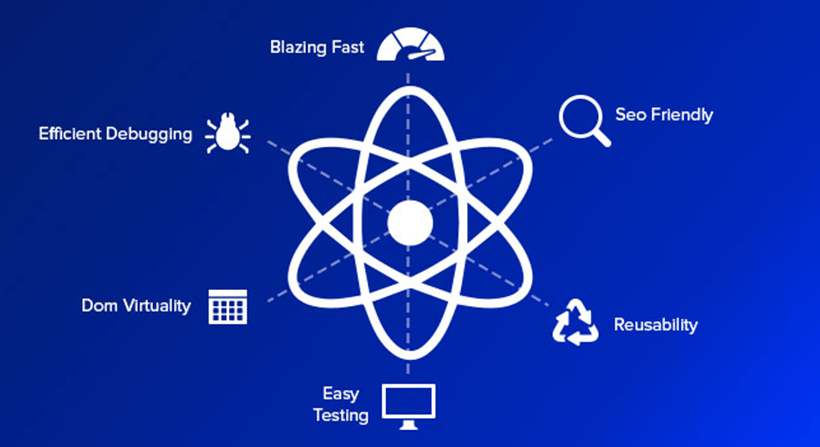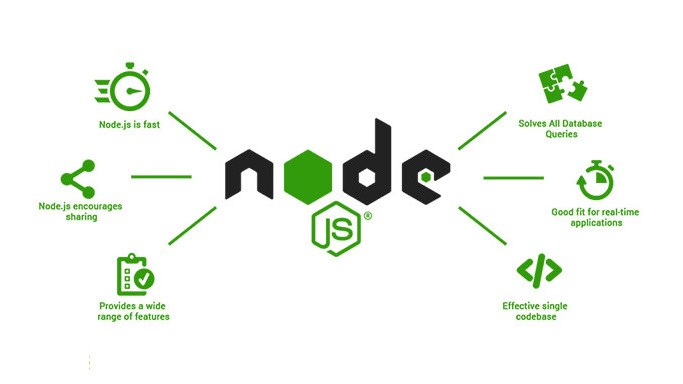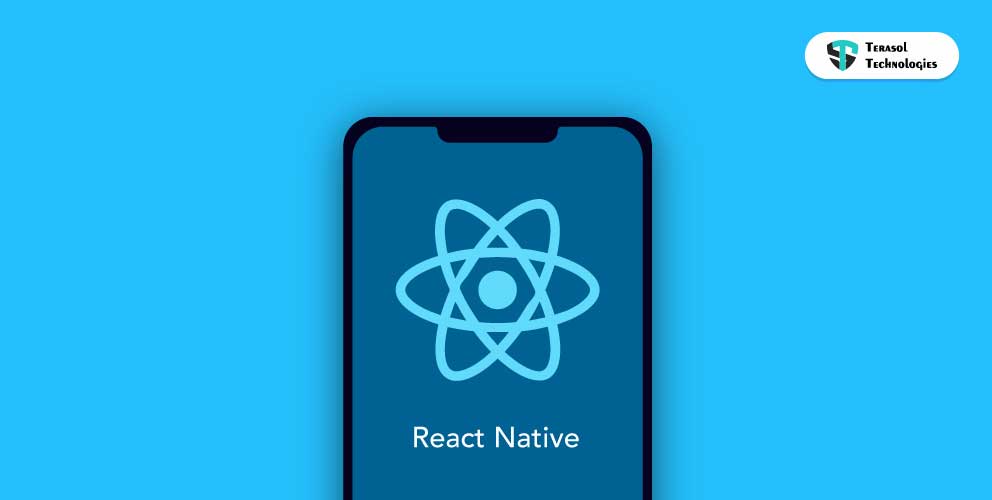With the development of technology, companies now have more ways than ever to interact with their customers.
In today's technologically advanced world, it is crucial to have a dynamic and responsive web app in order to stay current.
We have all seen a significant change in the features of web app development over the past few years.
With the development of new technologies, everything—be it user interface, structural and functional approach, API integration, or server deployment—has undergone a complete 180-degree turn. You must therefore be aware of the ideal combination for web apps.
For effective web development, several of the top developers are considering combining React and NodeJS for web development.
Do you know why?
These two well-known JavaScript libraries make a terrific combination for building user-centric, flexible, and scalable web apps. The user interface is given a compelling touch by React, while a server-side JavaScript environment is provided by NodeJS. Together, they give developers the tools they need to create scalable web applications with the lowest possible latency.
Let's examine these two technologies and observe how they assist developers in creating contemporary and feature-rich web apps rapidly in order to work with this terrific combination.
Let’s get started!
Introducing React and Its Secrets
A front-end JavaScript library called React makes it possible to create reusable UI elements. Large web apps with data-driven, dynamic views can be built with its assistance. Additionally, it maintains great responsiveness and functionality across a variety of devices.
Components are at the heart of ReactJs. There are various elements of your website that you can build while developing a user interface with React library. There is built-in isolation for these components.
The fact that different developers can work on different components while saving time is wonderful. The components are then combined to provide a complex user interface.
Yes, it is the secret of React.js that rules developers' hearts.
React.js other great feature is that modifications are made in the virtual DOM. Therefore, the virtual DOM now forwards the changes in the real DOM rather than reloading the entire real DOM. As a result, designing a user interface for any website becomes a simple task. So, for building inventive and user-centric web apps, React.js dominates the market.
What makes React challenging and dynamic?

- In React, various components are available. Depending on the needs of the project, developers can import any single component.
- It only goes one way because it is based on the idea of one-way data binding.
- Using JSX (JavaScript Syntax Extension) allows developers the freedom to compose HTML and JS simultaneously.
- It provides conditional expressions for rendering that can either choose alternative elements or components.
- As a result of its high performance and simplicity.
Uses for React include:
- Web browsing apps.
- Developing user interfaces.
- Dynamic libraries.
- Single-page applications.
- Developing large social media platforms like Twitter.
Introducing NodeJs and Its Truth
The JavaScript engine V8 in Google Chrome is used to develop Node.js. It is an open-source programming language that can run on several platforms and that, in turn, speeds up development.
With a JS runtime environment, Node.js enables you to develop a distinctive back-end for your application. It is an event-driven language and a great choice for applications that use a lot of data. It can run on a variety of platforms and accelerate code execution.
If you use Node.js in conjunction with the JS language and modules, there is no duplication. Additionally, it appears that Node.js can manage scalability and best meets your needs.
What makes Node JS so demanding and dynamic?

- Node JS provides a high scalability feature in addition to a single-threaded event loop approach.
- It is cross-platform and React-compatible in nature.
- Provides little to no buffering and quick data transmission.
- Rapid implementation of code.
- It is capable to accelerate the development process.
Node.js is Used for:
- Creating real-time web apps
- Data streaming purposes
- Complex SPAs (Single Page Applications)
- Client-side proxy
Now you know more about these two amazing JavaScript libraries- React and NodeJs. But can they work together? Will their combination be worth a shot for web development?
Is it a good idea to use Node.js With React?
The development of scalable and rapid back-end RESTful APIs is made possible by Node.js. The front-end library React, on the other hand, produces interactive user interfaces. You can quickly create complex and scalable web apps using both tools.
The most often used platform for hosting and operating web servers for React apps is Node. After all, the NPM command-line interface CLI allows you to install any package using NPM (Node Package Manager).
Additionally, Node makes use of Webpack and other plugins to convert a React application into a single file that is simple to compile.
So yes it is, as React and NodeJs make a terrific combination together. Below are some reasons why their combination is preferred by developers.
Why Use React and Node.JS Together for Web Development?
The question of whether Node.js is required in the backend to run React.js comes up from time to time among developers. No, using Node.js in the backend while working with React.js in the frontend is not required.
However, Node.js is now regarded as the best technology for hosting and managing a web server for React apps in the tech industry.
The following arguments serve as foundations for creating a solid foundation for integrating React and NodeJs.
1. Real-time data accessibility
Use Node.JS if your business software demands a constant server connection and maintains real-time data, management, or wants to build a data streaming app.
2. The MERN stack
ReactJS and Node.js are both extensively usable with the MERN stack. MongoDB, Express, React, and Node.js make up MERN. The combination of all these various libraries with Node.js and React.js will offer the website a new dimension.
3. Scalability
Developers may create dynamic, sizable, data-driven web applications that are responsive on a variety of devices by combining Node with React. While working on huge projects and maintaining the speed of your website, scalability would be helpful.
4. High-server load
Therefore, integrating Nodejs and React makes sense if your main goal is to construct a website with various features. There will be a huge server load and a possibility of a website crash when there are several facets. Therefore, it is crucial for the owner of an IT company to create a website that can maintain server load balance.
The website can manage numerous requests more easily with Nodejs and React. Additionally, it will be crucial for improving customer engagement as well.
5. One language for back-end and front-end
Developers don't need to master difficult back-end languages like Python or Ruby when using Node with React. Without changing between frameworks and programming languages, they may construct front-end code using React and Node for server-side development. Furthermore, it saves time, money, and resources.
6. APIs for JSON
It is crucial that IT business executives are aware of Nodejs' high level of code reusability. Reactjs, on the other hand, makes code exchange simple. Thus, using both makes it considerably easier to create JSON APIs.
7. More streamlined process
Leading corporations avoid participating in the Reactjs vs. Nodejs discussion. Instead, they concentrate on combining the first two to produce a more efficient procedure. With React DOM, developers can eliminate redundancies and speed up and simplify the development process.
Additionally, there are components for working with Node.js using React DOM. This increases the likelihood of having server-side rendering that is more efficient.
8. SPA (Single Page Application)
If you need asynchronous data loading with SPA for your company website, then, React with Node as your back-end is the best option because it enables you to build a simple back-end model using call-back methods.
9. Extensive use of JavaScript
The unique selling point of combining Reactjs and Nodejs together in web development is that they bring JavaScript's richness. JavaScript is simpler for programmers to use than many other computer languages. But now that Reactjs is available, writing JavaScript is even easier.
As of 2022, JavaScript and HTML/CSS were the most commonly used programming languages among software developers around the world.
.png?width=676&name=React%20vs%20NodeJS-%20Stats%20(1).png)
Because JavaScript has a lower learning curve, developers would quickly feel at home using it. They will therefore have a great possibility of developing fantastic web applications using React and Nodejs.
Additionally, the combination of NodeJS with ReactJS enables the web development process the flexibility and power of JavaScript.
10. Faster Development
The outcomes of merging Node and React together are endless. Businesses benefit from everything, from getting outstanding ROI to making significant financial and time savings.
After all, the upkeep and operation of websites are quickly facilitated by these technologies.
Is a Combination of React and NodeJs a Good Fit to Keep up With the Market Demands?
YES, it is. According to the Statista survey, 47.12 percent of respondents reported using Node.js, while 42.62 percent were using React.js.
.png?width=660&name=React%20vs%20NodeJS-%20Stats%20(2).png)
The corporate climate of today is one that is constantly evolving. Additionally, NodeJs and ReactJs are in high demand, and their combination has surpassed Java. This is due to the fact that both of these libraries’ domains are constantly expanding.
For developers that need to build responsive, contemporary online applications to manage vast amounts of data, React and NodeJs is a fantastic choice.
Additionally, the adaptable design framework of React gives users the simplicity and freedom to create reusable UI elements. In contrast, they are better suited to handle massive quantities of traffic because of Node's event-driven architecture.
As a result, it will assist businesses to keep up with the relentless demand and thrive in the market.
Wrapping Up This Terrific Combination
We have seen how React and NodeJs work well together for web development. Therefore, the new-age enterprises should avoid debating Reactjs vs Nodejs.
The performance of the website can be scaled significantly by using Nodejs and Reactjs, for sure.
To build engaging web applications, you simply need to work with competent full-stack developers or a team of developers. Hire committed and experienced engineers if you intend to use React as a front-end and Node as a back-end for your next web development project.


